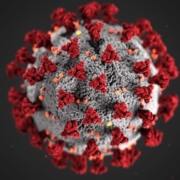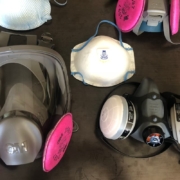EPA Releases Draft Assessment of Effects of Inpyrfluxam on Endangered Species for Public Comment
This original announcement was published by the EPA on October 27, 2022. Click here for more information.
The U.S. Environmental Protection Agency (EPA) is releasing its draft biological evaluation (BE) that contains the Agency’s analysis of the potential effects of the fungicide inpyrfluxam on federally listed endangered and threatened (listed) species and their designated critical habitats. While EPA finds that inpyrfluxam is likely to adversely affect certain listed species and critical habitats, EPA does not predict that inpyrfluxam will lead to a future jeopardy or adverse modification finding for these species and habitats. The draft BE will be available for public comment for 60 days.
The draft BE is part of EPA’s efforts to meet its obligations under the Endangered Species Act (ESA), which are discussed in EPA’s workplan: Balancing Wildlife Protection and Responsible Pesticide Use.
Background on inpyrfluxam
Inpyrfluxam is a fungicide that was first registered in 2020. It is used to protect a variety of crops against fungal pests, such as Rhizoctonia species, that cause seed decay, seedling damping‐off, and root rot. The proposed and currently approved product labels include some mitigation measures to reduce risks to plants and animals. These risks were identified in the Federal Insecticide, Fungicide, and Rodenticide Act (FIFRA) ecological risk assessments that EPA conducted before registering products containing inpyrfluxam.
After EPA registered several products containing the new active ingredient inpyrfluxam, several organizations challenged those registrations because EPA had not met its ESA obligations before issuing the registrations. Under the ESA, EPA must assess the effects of inpyrfluxam on listed species and designated critical habitats and, if necessary, initiate consultation with the U.S. Fish and Wildlife Service and/or the National Marine Fisheries Service (the Services). In July 2022, the Ninth Circuit Court of Appeals ruled in Center for Biological Diversity v. EPA (No. 20-73146) that EPA was required to complete a final effects determination, which EPA will include in its final inpyrfluxam BE, by June 22, 2023.
Draft biological evaluation
For this draft BE, EPA evaluated the effects of inpyrfluxam on over 1,700 listed species and over 800 designated critical habitats in the United States. The BE encompasses all currently proposed and registered uses and product labels for pesticide products containing inpyrfluxam. EPA’s draft BE finds that inpyrfluxam:
- Will have no effect on 35 percent of species and 33 percent of designated critical habitats.
- May affect but is not likely to adversely affect 56 percent of species and 58 percent of designated critical habitats.
- Is likely to adversely affect 9 percent of listed species and 8 percent of designated critical habitats.
A “may affect but is not likely to adversely affect” determination is made when effects on a listed species or designated critical habitat are expected to be discountable (for example, effects that are extremely unlikely to occur), insignificant, or beneficial. A “likely to adversely affect” (LAA) determination means that EPA reasonably expects that at least one individual animal or plant, among a variety of listed species, may be exposed to inpyrfluxam at a sufficient level to have an adverse effect. This is the case even if a listed species is almost recovered to a point where it may no longer need to be listed.
In this BE, EPA further refined its analysis to predict the likelihood that inpyrfluxam use could lead to a future jeopardy finding for certain listed species or adverse modification finding for designated critical habitats. In contrast to its LAA determinations, EPA’s draft likelihood of jeopardy and adverse modification predictions examine effects of inpyrfluxam at the species scale (population as opposed to an individual of a species). EPA does not predict that the approved and proposed uses of inpyrfluxam would lead to future jeopardy for any listed species or adversely modify their critical habitats. While EPA has made predictions about the likelihood of jeopardy and adverse modification as part of its effects determinations consistent with 50 CFR 402.40(b)(1), the Services are responsible for making the actual jeopardy/adverse modification findings and have the sole authority to do so.
After reviewing public comments on the draft BE, EPA will make any appropriate changes and issue a final BE. If EPA’s final BE continues to find that inpyrfluxam is likely to adversely affect listed species and/or their designated critical habitats, then EPA will initiate formal consultation and share its findings with the appropriate Service(s). During formal consultation, the Services use the information in EPA’s BE to inform their biological opinions. If the Services determine in their final biological opinions that additional mitigations are necessary to address any jeopardy or adverse modification determination or to address any incidental take, then EPA will work to ensure that any necessary registration or labeling changes are made.
The draft BE is available for public comment for 60 days in docket EPA-HQ-OPP-2018-0038-0051.





